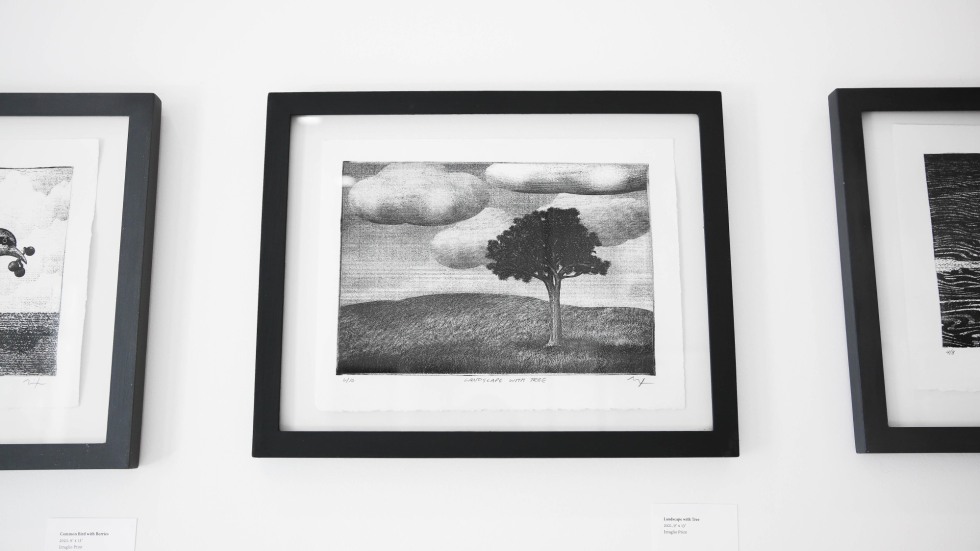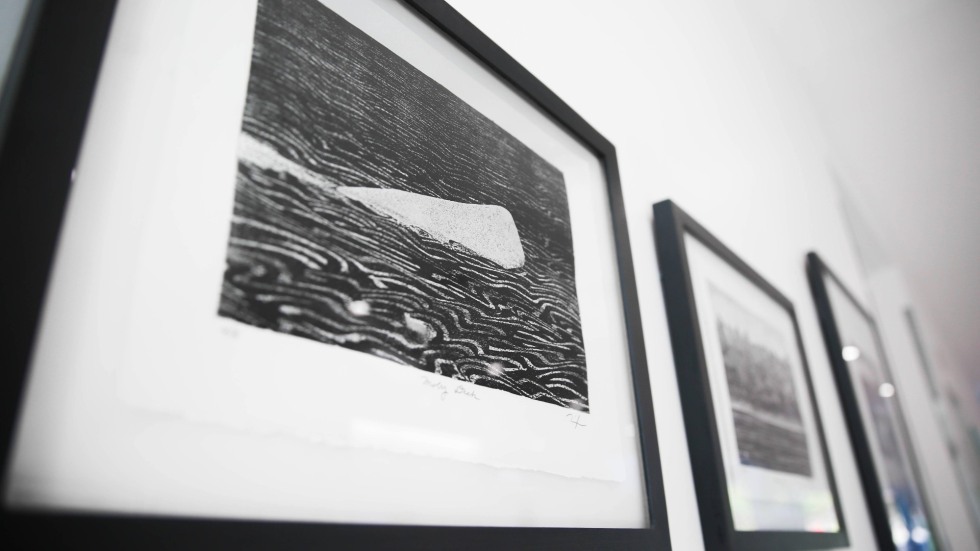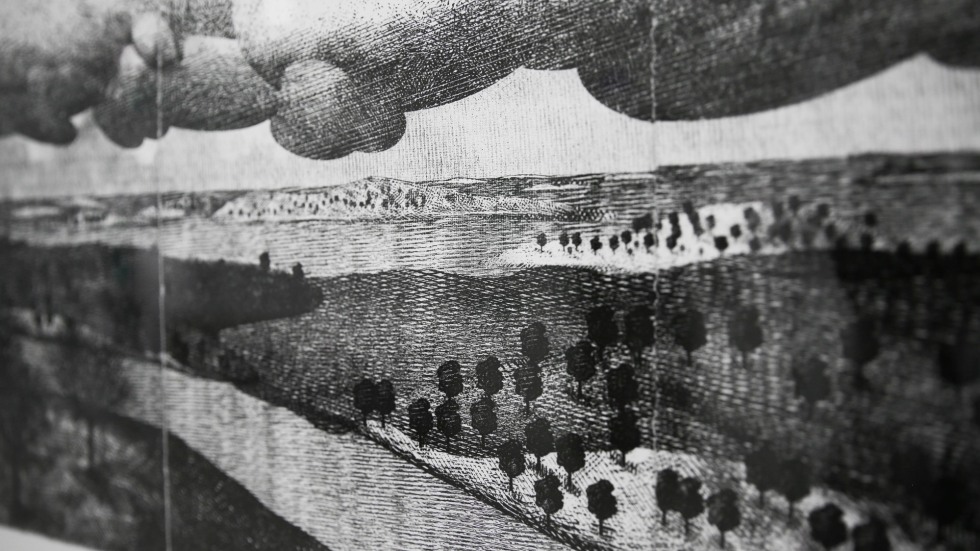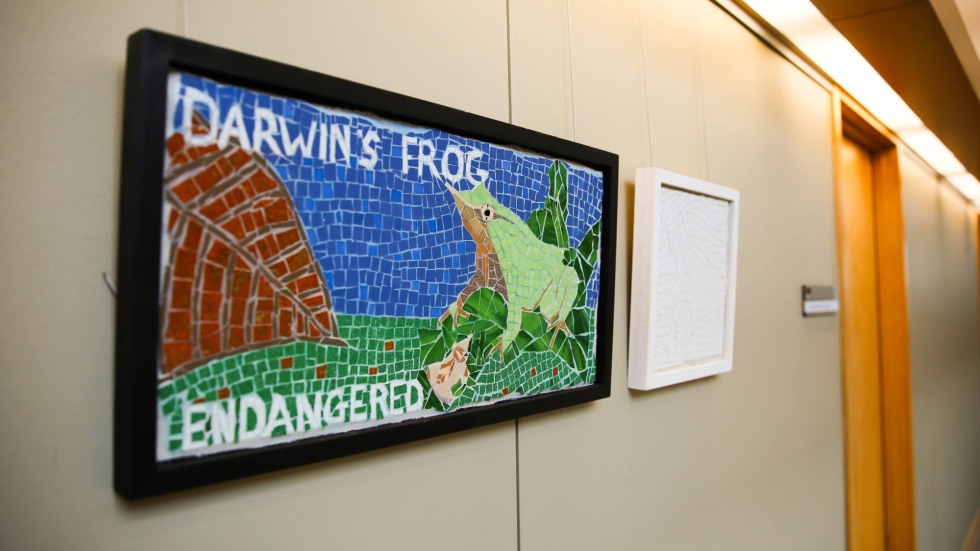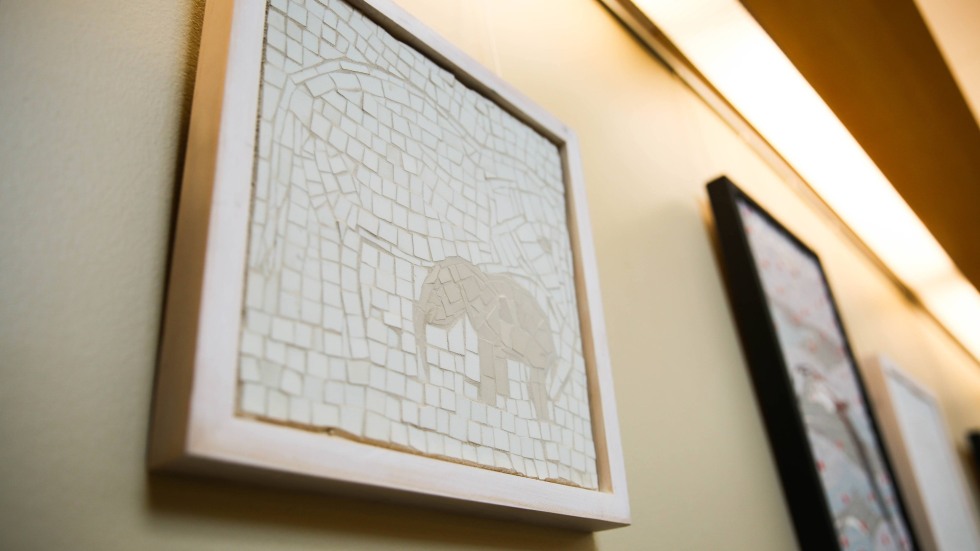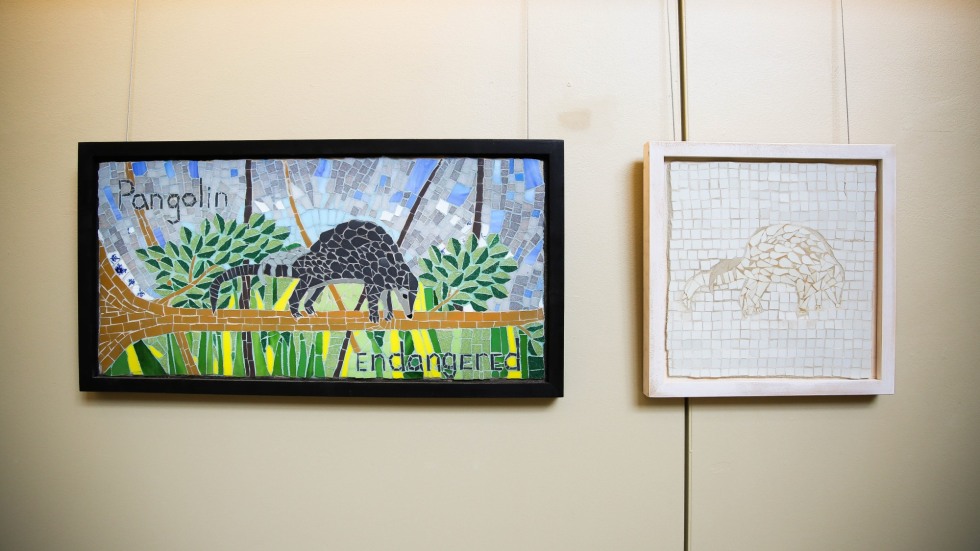Nixon said he hopes the sense of peace he feels in the studio can be extended to the exhibition space at Watson where students and researchers studying what sometimes feel like intractable conflicts and issues with existential implications can find temporary repose. "I like what Henri Matisse said about his paintings," Nixon said, "He wanted them to be 'rather like a good armchair,' and a 'soothing calming influence on the mind.' I hope that people who see this exhibition can share some of my experience in the studio when looking at my work."
"I want people to know that political art is not the sole response to an exhausting and worrisome world," said Nixon.
Inventions and discoveries
The exhibition features 23 extraordinarily detailed prints that were created using Nixon's technologically enhanced update of traditional intaglio printing.
Traditional intaglio printing, which dates back to 15th century Europe, is a slow and meticulous process in which an image is directly engraved onto a sheet of metal. A layer of ink is applied to the metal plate and then wiped off, leaving ink only in the grooves made by the incisions. A piece of paper is then placed on top of the metal and is compressed by a heavy roller which presses the paper into the grooves where it absorbs the ink.
One of the technique's advantages is the level of fine detail that is possible. In fact, since 1968, the U.S. Treasury has used a dry intaglio technique to print U.S. paper currency because the detail it produces is difficult to counterfeit.
Nixon said he has updated the intaglio technique using new technology. "These new works on paper were made using an innovative blend of old and new technologies," he said. "The printing process I employ is the age-old traditional intaglio form, which requires the individual hand inking of the plates." Nixon's process still begins with his hand, but rather than etching directly onto a sheet of metal, he noted, "My images are initially generated through an iPad using a popular software program." The digital images are then laser-cut onto acrylic plates. "These are then covered with a dampened sheet of paper and run through a heavy steel press," Nixon said.
Nixon utilized new technology to overcome some of the limitations of the traditional intaglio method. "The late master printmaker and fellow Rhode Islander Richard Benson suggested that the picture-making capacities of intaglio printing were overtaken by other technologies — photography, for instance — because intaglio was limited to the size of the human hand," said Nixon.
"Essentially, this limit was on the amount of data, specifically lines, that could be used to make an image," he said. "Adding an iPad to the process rectifies this problem. By marrying the two technologies, I've found a way to think on a larger scale than was possible with traditional printmaking."
Nixon utilized modern data techniques in another innovative way. High-resolution scanning technology allowed him to replicate the markings of one of his favorite artists. "Wenceslaus Hollar was a Bohemian artist and he was masterful at creating marks," said Nixon. "And using the iPad I was able to replicate his markings by loading them as brushmarks in the drawing program I used," a process Nixon compared to sampling bits of music in hip-hop.
Nixon said, "The prints embody two separate meanings of the word technology. The first relates to the original meaning from the Greek, a sort of craftology. The second meaning of technology is the more common, contemporary one, referring to the use of scientific principles to achieve practical ends. I created a process that begins and ends with my hand, drawing on new technology and a traditional press."
There will be an artist talk featuring Nixon and an opening reception on September 26, 2023, at 5:00 p.m. in room 101 (True North) of Stephen Robert '62 Hall at 280 Brook Street. The talk and reception are free and open to the public.
